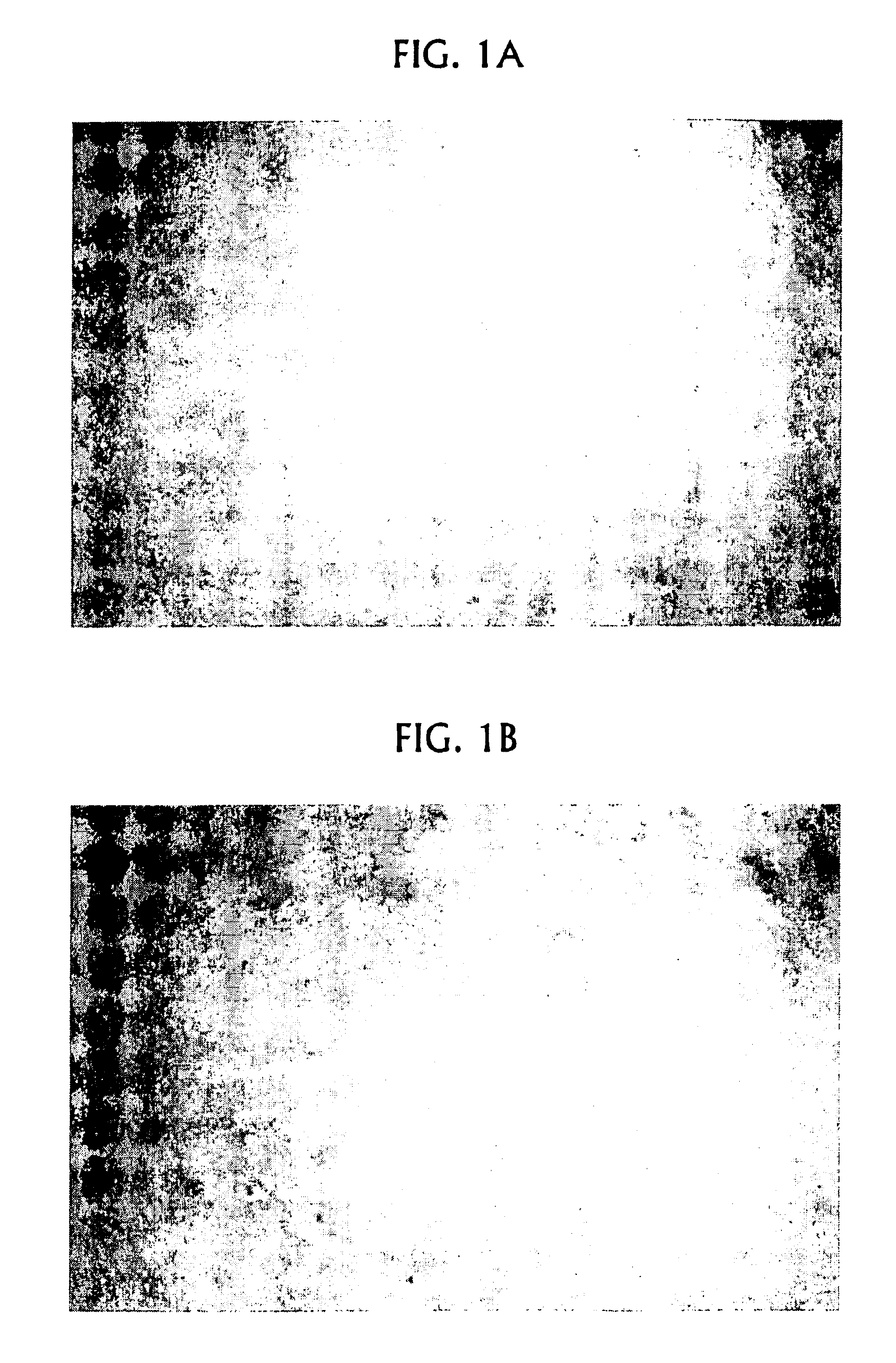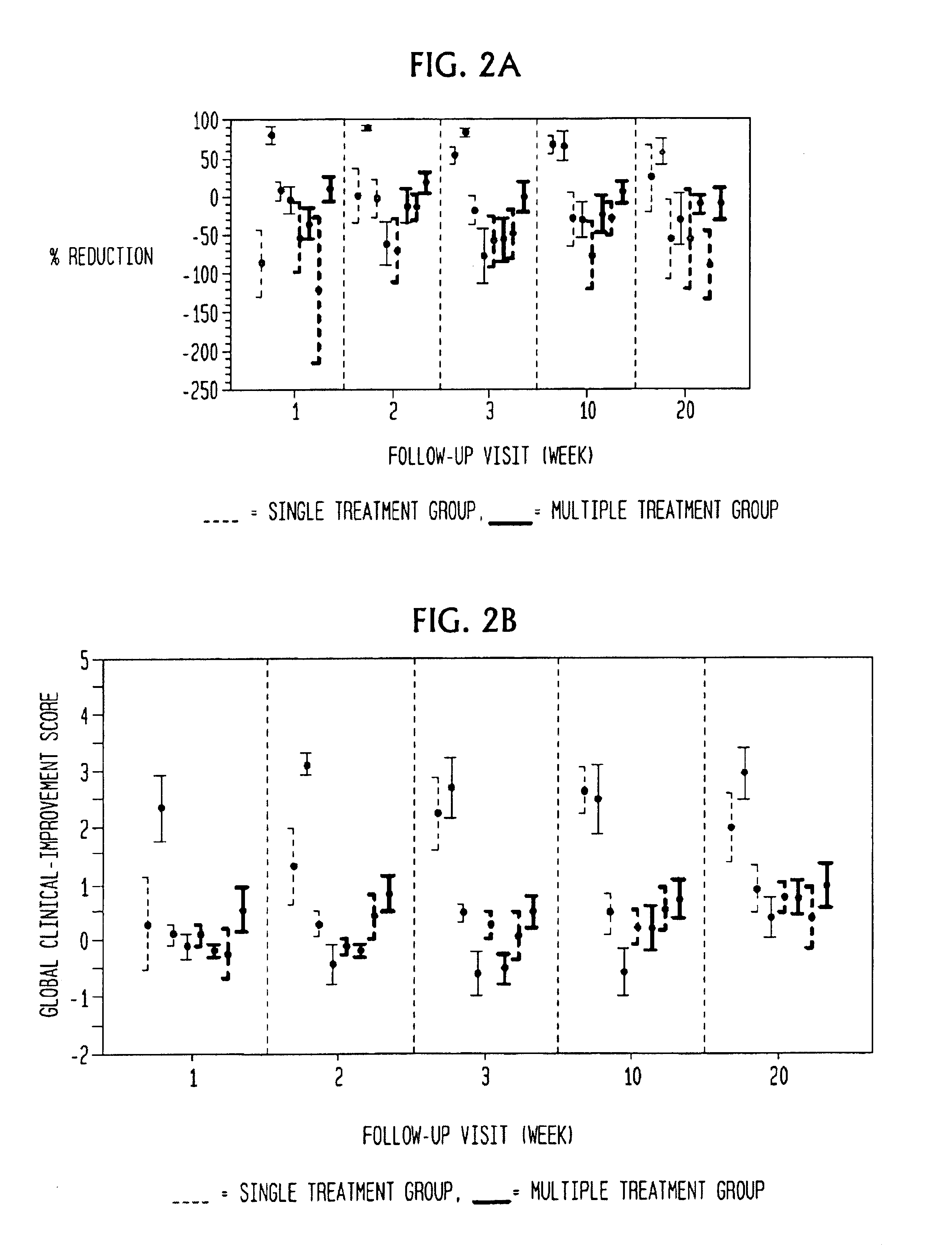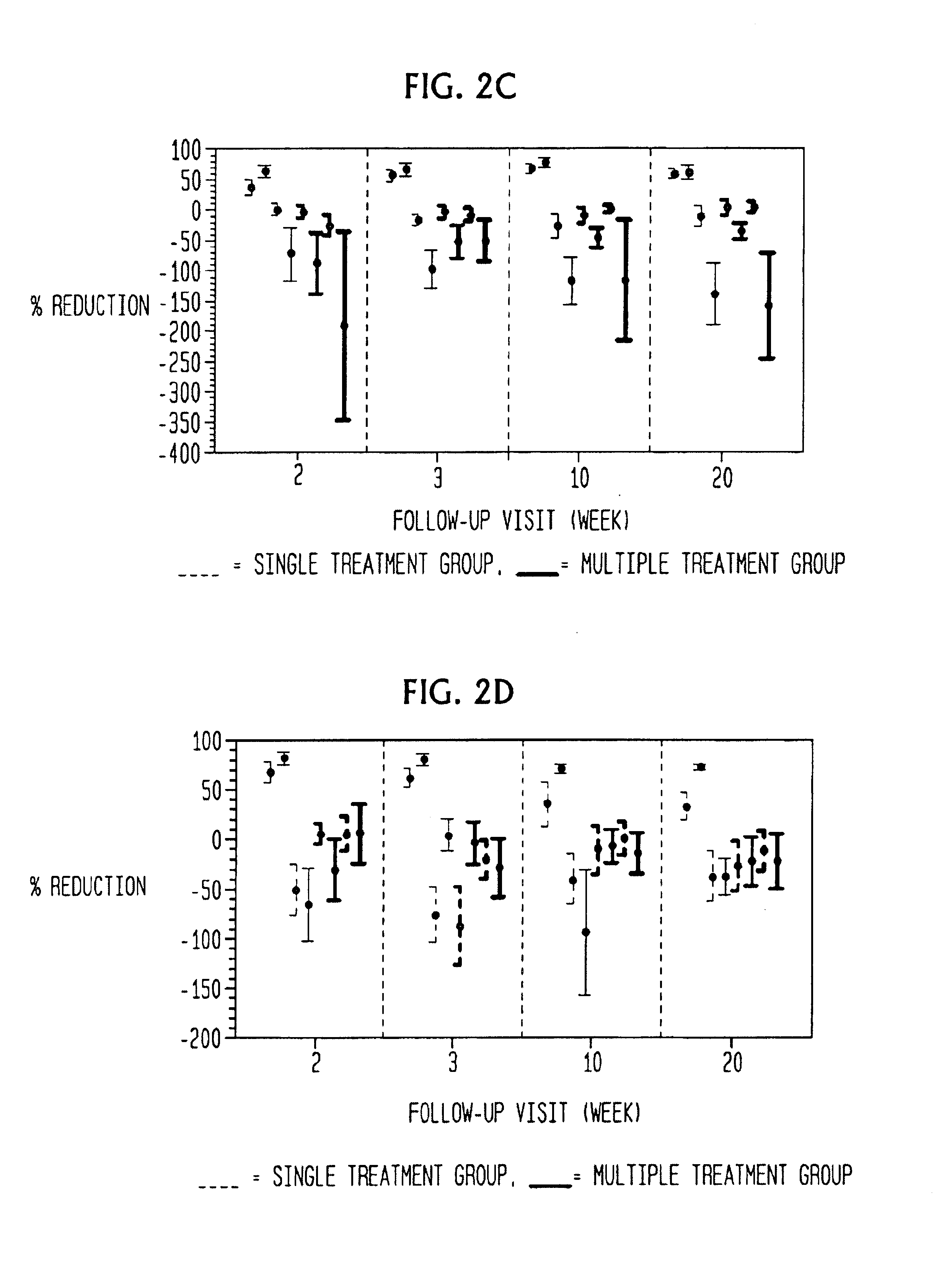Topical aminolevulinic acid-photodynamic therapy for the treatment of acne vulgaris
a technology of aminolevulinic acid and photodynamic therapy, which is applied in the field oftopical aminolevulinic acidphotodynamic therapy for the treatment of acne vulgaris, can solve the problems of no acne cure, subpopulation of follicles, and irritation of skin disorders such as acne, and achieve the effects of reducing the production of oil/lipids and reducing the size of the sebaceous gland
- Summary
- Abstract
- Description
- Claims
- Application Information
AI Technical Summary
Benefits of technology
Problems solved by technology
Method used
Image
Examples
examples
[0075]Photodynamic therapy with topical ALA was tested for the treatment of acne vulgaris, in an open-label prospective human study. Each of 22 subjects with acne on the back was treated in 4 sites with ALA plus red light (ALA-PDT), ALA alone, light alone, and untreated control. Half of the subjects were treated once; half were treated 4 times, 20% topical ALA was applied with 3 hr occlusion, and 150J / cm2 broad band light (550-700 mm) was given. Sebum excretion rate and auto-fluorescence from follicular bacteria were measured before, and at 2, 3, 10, and 20 weeks after treatment. Histologic changes and PpIX synthesis in pilosebaceous units were observed from skin biopsies. ALA-PDT caused a transient acne-like folliculitis. Sebum excretion was eliminated for several weeks, and decreased for 20 weeks after PDT; multiple treatments caused greater suppression of sebum. Bacterial porphyrin fluorescence was also suppressed by PDT. On histology, sebaceous glands showed acute damage and wer...
PUM
| Property | Measurement | Unit |
|---|---|---|
| wavelength | aaaaa | aaaaa |
| wavelength | aaaaa | aaaaa |
| wavelength range | aaaaa | aaaaa |
Abstract
Description
Claims
Application Information
 Login to View More
Login to View More - R&D
- Intellectual Property
- Life Sciences
- Materials
- Tech Scout
- Unparalleled Data Quality
- Higher Quality Content
- 60% Fewer Hallucinations
Browse by: Latest US Patents, China's latest patents, Technical Efficacy Thesaurus, Application Domain, Technology Topic, Popular Technical Reports.
© 2025 PatSnap. All rights reserved.Legal|Privacy policy|Modern Slavery Act Transparency Statement|Sitemap|About US| Contact US: help@patsnap.com



